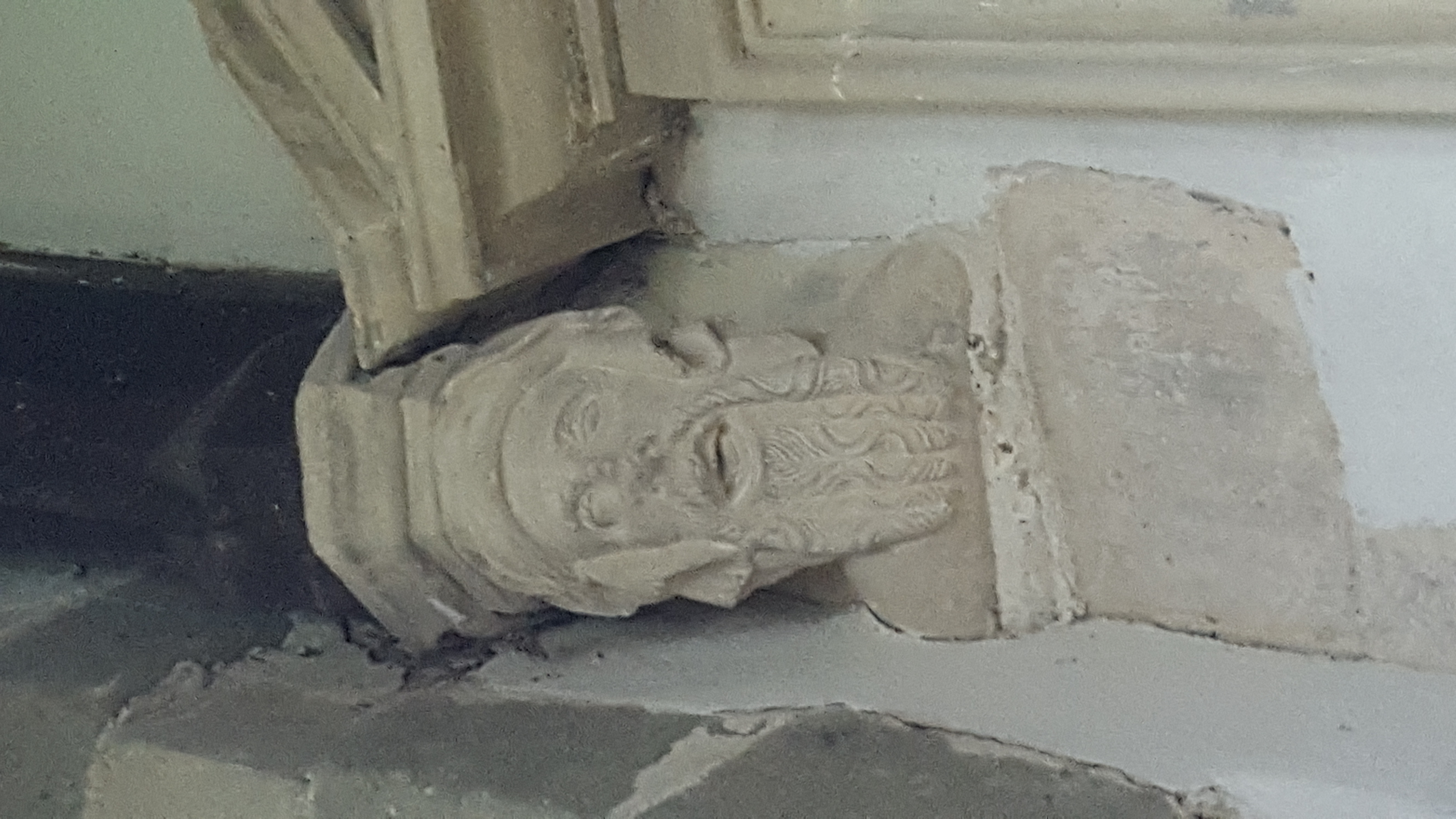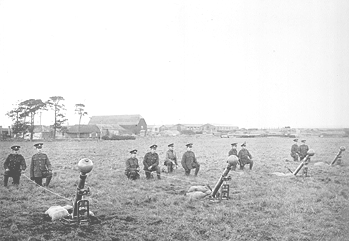|
Idmiston
Idmiston is a village and civil parish in Wiltshire, England. The village is about southeast of Amesbury and northeast of Salisbury. The parish includes the villages of Porton and Gomeldon; all three villages are on the River Bourne and are linked by the A338 road. Porton Down military science park is in the parish, separated from Idmiston by a railway line. It is home to the Defence Science and Technology Laboratory and related businesses. History The Port Way, a Roman road towards Sorviodunum (Old Sarum), followed the Bourne valley and passed close to the present settlements. The Domesday survey in 1086 recorded 15 households at ''Eunestetone'' (Idmiston), on land held by Glastonbury Abbey; and eight at ''Poertone'' or ''Portone'', on land held by Edward of Salisbury and Wulfric the hunter. Idmiston Manor is a house from c. 1600 with 17th-century interior features and an arched gateway from the same period; both house and gateway are Grade II* listed. The Old Rectory, ... [...More Info...] [...Related Items...] OR: [Wikipedia] [Google] [Baidu] |
All Saints Church, Idmiston
All Saints Church in Idmiston, Wiltshire, England, was built in the 12th century. It is recorded in the National Heritage List for England as a Grade I listed building and is in the care of The Churches Conservation Trust. It was declared redundant in 1977, and was vested in the trust the next year. Description The church is built of flint with interspersed limestone. It has a west tower, nave with north and south aisles, and a chancel, and was begun in the 12th century. The only remaining structure from that century is the lower part of the tower; the later corbels of the east arch under the tower are decorated with re-used 12th-century crudely carved heads. The 13th-century chancel has lancet windows. Aisles were added in the later 13th century, and at some point they were lengthened to embrace the tower. In the 15th century the two-storey north porch was built, almost all the nave windows were changed and the clerestory added, with parapets and gargoyles. The to ... [...More Info...] [...Related Items...] OR: [Wikipedia] [Google] [Baidu] |
Idmiston Halt Railway Station
Idmiston Halt railway station served Porton Down military camp in Idmiston, Wiltshire, England, from 1943 to 1968 on the West of England line The West of England line (also known as the West of England Main Line) is a British railway line from , Hampshire, to in Devon, England. Passenger services run between London Waterloo station and Exeter; the line intersects with the Wessex Ma .... History The station was opened on 3 January 1943 by the Southern Railway. It closed on 9 September 1968. References Disused railway stations in Wiltshire Former Southern Railway (UK) stations Beeching closures in England Railway stations in Great Britain opened in 1943 Railway stations in Great Britain closed in 1968 1943 establishments in England 1968 disestablishments in England {{SouthWestEngland-railstation-stub ... [...More Info...] [...Related Items...] OR: [Wikipedia] [Google] [Baidu] |
Porton
Porton is a village in the Bourne valley, Wiltshire, England, about northeast of Salisbury. It is the largest settlement in Idmiston civil parish. The village gives its name to the nearby Porton Down military science park, which is home to the Defence Science and Technology Laboratory and related businesses. Religious sites The Baptist faith flourished in this part of Wiltshire in the 17th century, then declined in the 18th. A chapel was built to the south of Porton village in 1865 and enlarged in 1922, 1972 and 2006; as of 2015 it is still open. The Anglican Church of St Nicholas was built in 1877 to designs by J.L. Pearson, replacing a building from the 16th century or earlier. Built in flint with brick dressings under a tiled roof, the church has a nave with a south porch and bellcote, and a chancel with a vestry. The octagonal font is from the 14th or 15th century, and there is stained glass by Clayton and Bell. St Nicholas became the parish church in 1977, when the ol ... [...More Info...] [...Related Items...] OR: [Wikipedia] [Google] [Baidu] |
Gomeldon
Gomeldon is a small village in the valley of the River Bourne in Wiltshire, England, in the civil parish of Idmiston. It lies about north-east of Salisbury, between Winterbourne Gunner and Porton, and as of 2012 its population was estimated at about 200. There is a primary school and, although there is no station, the main railway line to London passes through the village. Gomeldon was a village in medieval times. Ten buildings on the ancient village site south-west of the school, between the modern village and the river, were excavated in the 1960s, and a report published by Salisbury Museum. The site of the deserted village An abandoned village is a village that has, for some reason, been deserted. In many countries, and throughout history, thousands of villages have been deserted for a variety of causes. Abandonment of villages is often related to epidemic, f ... is designated as a scheduled monument. In 1821 the population was 20, and in 1831 there were 48 inhabit ... [...More Info...] [...Related Items...] OR: [Wikipedia] [Google] [Baidu] |
Salisbury (UK Parliament Constituency)
Salisbury is a constituency represented in the House of Commons of the UK Parliament since 2010 by John Glen of the Conservative Party. History From 1295, (the Model Parliament) a form of this constituency on a narrower area, the Parliamentary borough of Salisbury, returned two MPs to the House of Commons of England Elections were held using the bloc vote system. This afforded the ability for wealthy male townsfolk who owned property rated at more than £2 a year liability in Land Tax to vote in the county and borough (if they met the requirements of both systems). The franchise (right to vote) in the town was generally restricted to male tradespersons and professionals within the central town wards, however in medieval elections would have been the aldermen. The borough constituency co-existed with a neighbouring minuscule-electorate seat described towards its Great Reform Act abolition as a rotten borough: Old Sarum that covered the mostly abandoned Roman citadel to the ... [...More Info...] [...Related Items...] OR: [Wikipedia] [Google] [Baidu] |
Allington, Salisbury
Allington is a village and Civil parishes in England, civil parish in Wiltshire, England, about southeast of Amesbury and northeast of Salisbury. The parish includes the village of Boscombe, Wiltshire, Boscombe; both villages are on the River Bourne, Wiltshire, River Bourne and the A338 road. Most of the west boundary of the parish is also the county boundary with Hampshire. History The south of the parish has evidence of Iron Age settlement and a Romano-British culture, Romano-British Roman villa, villa; the Port Way Roman roads in Britain, Roman road crossed the parish in the southeast. Allington is recorded in the Domesday Book of 1086, when there were eight households and one mill at ''Alentone'', on land held by Amesbury Abbey. By 1377, Allington was still a small village, with 35 poll-tax payers. The settlement developed where a minor road from Winterslow forded the river and crossed the road from Salisbury; the Winterslow road was obliterated in the early 20th century ... [...More Info...] [...Related Items...] OR: [Wikipedia] [Google] [Baidu] |
MoD Boscombe Down
MoD Boscombe Down ' is the home of a military aircraft testing site, on the southeastern outskirts of the town of Amesbury, Wiltshire, England. The site is managed by QinetiQ, the private defence company created as part of the breakup of the Defence Evaluation and Research Agency (DERA) in 2001 by the UK Ministry of Defence (MoD). The base was originally conceived, constructed, and operated as Royal Air Force Boscombe Down, more commonly known as RAF Boscombe Down, and since 1939, has evaluated aircraft for use by the British Armed Forces. The airfield has two runways, one in length, and the second . The airfield's evaluation centre is currently home to Rotary Wing Test and Evaluation Squadron (RWTS), Fast Jet Test Squadron (FJTS), Heavy Aircraft Test Squadron (HATS), Handling Squadron, and the Empire Test Pilots' School (ETPS). History First World War An aerodrome opened at the Boscombe Down site in October 1917 and operated as a Royal Flying Corps Training Depot Station. Kn ... [...More Info...] [...Related Items...] OR: [Wikipedia] [Google] [Baidu] |
Port Way
Port Way (also known as the Portway) is an ancient road in southern England, which ran from Calleva Atrebatum (Silchester, in modern-day Hampshire) in a south-westerly direction to Sorbiodunum (Old Sarum, Wiltshire). Often associated with the Roman Empire, the road may have predated the Roman occupation of Britain. By the time of the Roman occupation of Calleva Atrebatum and Sorbiodunum, the road formed part of a longer route between Londinium (London) and Isca Dumnoniorum (Exeter). The term "Port Way" is sometimes used to refer to this whole route, although the section between Londinium and Calleva Atrebatum is correctly known as The Devil's Highway, and the section between Sorbiodunum and Vindocladia (Badbury Rings) is Ackling Dyke. The road was studied by antiquarians such as Sir Richard Colt Hoare, Henry MacLauchlan, Charles Roach Smith, Thomas William Shore, Thomas Codrington, and Ivan Margary, and much of the route can still be traced. The section east of Hannington ... [...More Info...] [...Related Items...] OR: [Wikipedia] [Google] [Baidu] |
Porton Down
Porton Down is a science park in Wiltshire, England, just northeast of the village of Porton, near Salisbury. It is home to two British government facilities: a site of the Ministry of Defence's Defence Science and Technology Laboratory (Dstl) – known for over 100 years as one of the UK's most secretive and controversial military research facilities, occupying – and a site of the UK Health Security Agency. It is also home to other private and commercial science organisations, and is expanding to attract other companies. Location Porton Down is located just northeast of the village of Porton near Salisbury, in Wiltshire, England. To the northwest lies the MoD Boscombe Down airfield operated by QinetiQ. On some maps, the land surrounding the complex is identified as a "Danger Area". History of government use Porton Down opened in 1916 as the War Department Experimental Station, shortly thereafter renamed the Royal Engineers Experimental Station, for testing chemical w ... [...More Info...] [...Related Items...] OR: [Wikipedia] [Google] [Baidu] |
River Bourne, Wiltshire
The River Bourne is a river in the English county of Wiltshire, a tributary of the River Avon (Hampshire), Salisbury Avon. It flows in a generally southerly direction for about . In its upper reaches the river is a Winterbourne (stream), winterbourne, often dry in summer. The Bourne's source is at the eastern end of the Vale of Pewsey, just south of the village of Burbage, Wiltshire, Burbage. The river cuts through the chalk escarpment at Collingbourne Kingston, to flow south across Salisbury Plain through the town of Tidworth and the village of Shipton Bellinger. As it continues south the river passes the Bourne Valley villages: Cholderton, Newton Tony, Allington, Salisbury, Allington, Boscombe, Wiltshire, Boscombe, Idmiston, Porton, Gomeldon, Winterbourne Gunner, Winterbourne Dauntsey, Winterbourne Earls and Hurdcott. After passing Ford, Salisbury, Ford and Laverstock, the Bourne joins the Avon in the eastern outskirts of Salisbury. See also *List of rivers of England Refe ... [...More Info...] [...Related Items...] OR: [Wikipedia] [Google] [Baidu] |
Porton Railway Station
Porton railway station served the village of Porton, in Wiltshire, England, from 1854 to 1968 on the West of England line The West of England line (also known as the West of England Main Line) is a British railway line from , Hampshire, to in Devon, England. Passenger services run between London Waterloo station and Exeter; the line intersects with the Wessex Ma .... History The station was opened on 3 July 1854, along with the line from Andover to Milford. It closed on 9 September 1968. The station was serviced by a goods yard, which closed in 1962. Between 1916 and 1946 the Porton Down Camp Military Railway ( 2 foot gauge) ran between the goods yard at Porton station and the camp, almost a mile to the northeast. Proposed reopening A proposal was made to reopen the station to service the Porton Down science park. However, reopening the station was not seen as economically viable, as it was estimated that the reopening would cost £6m, and would affect the timetables ... [...More Info...] [...Related Items...] OR: [Wikipedia] [Google] [Baidu] |
Milford Railway Station (Salisbury)
Milford railway station is a railway station serving the village of Milford in the English county of Surrey. It is a stop on the Portsmouth Direct Line, from . The station has two side platforms flanking a pair of tracks, with step free access to both platforms. The platforms are linked by a publicly accessible footbridge and an adjoining level crossing controlled by safety barriers. There is a ticket office, staffed during weekday mornings only, on the northbound platform, and ticket machines are available at all times the station is open. The station car park has 136 spaces. The station has the same name as the fictional station in the film ''Brief Encounter'' (1945) starring Trevor Howard and Celia Johnson, although the scenes were filmed at Carnforth station in Lancashire. Services All services at Milford are operated by South Western Railway using and EMUs Emus may refer to: * Emu The emu () (''Dromaius novaehollandiae'') is the second-tallest livin ... [...More Info...] [...Related Items...] OR: [Wikipedia] [Google] [Baidu] |



